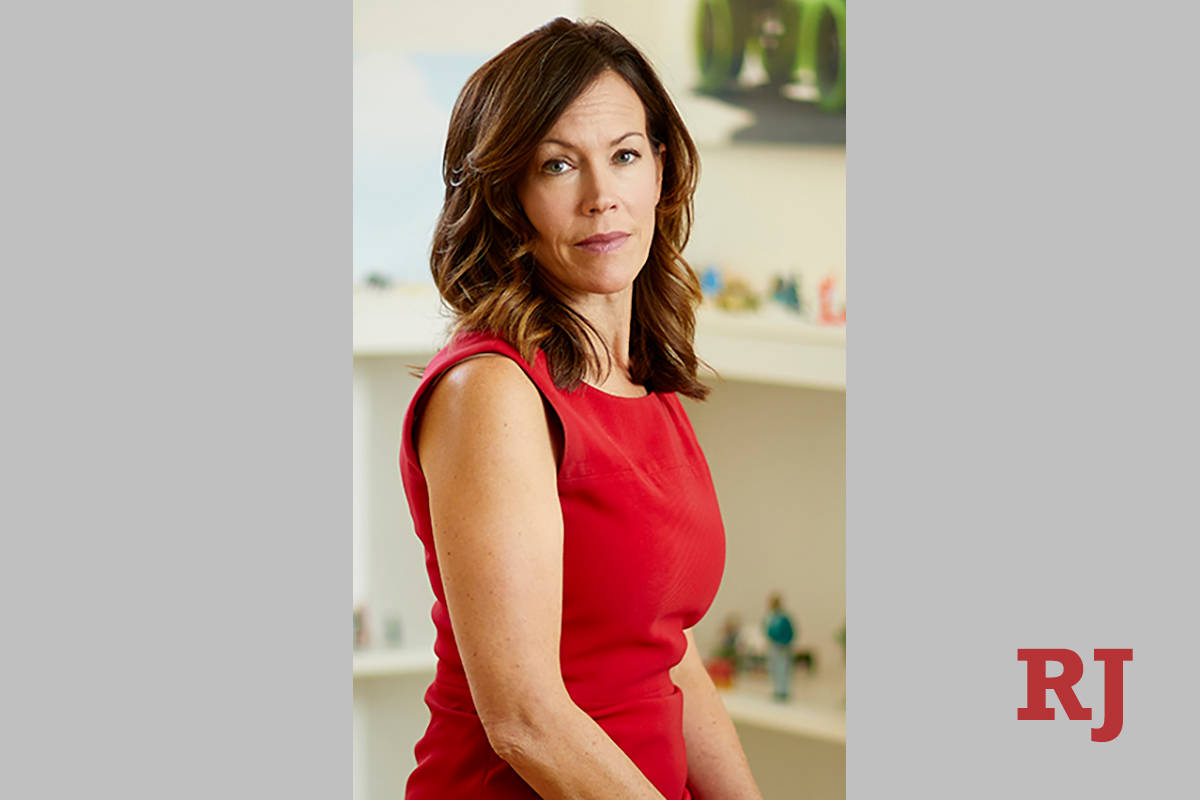Suicides decline in Las Vegas, but is it the calm before the storm?
At a time when we are battered by cruel statistics on infections, hospitalizations and deaths from COVID-19, one set of numbers, at least on the surface, provides a ray of hope in the time of coronavirus.
Preliminary numbers from the Clark County coroner’s office suggest that suicides declined in March and April despite all of the pain inflicted by a virus that has killed more than 300 people in Clark County and nearly 400 in the state while triggering shutdowns that have cost thousands their livelihoods.
Interpreting figures
First, the suicide numbers may yet increase as pending death investigations are completed, Clark County Coroner John Fudenberg said.
Then, too, some experts believe the low number of tourists in Las Vegas could be a factor.
Some authorities note that suicides can decrease in times of crisis as communities come together. But there may be a more ominous explanation: that we could be seeing the calm before the storm of a mental health crisis.
“Everybody’s just kind of holding their breath and expecting things to turn around any day now,” Las Vegas-area psychiatrist Dr. Lesley Dickson said. “I think that’s kind of holding people together.”
As certain aspects of life don’t return to normal, depression may take hold. “I think we may still be in a state of hope right now,” she said.
Monthly figures decline
In February, before the coronavirus crisis began, there were 34 suicides reported, an increase over the previous year’s 32 for the month and slightly above the five-year average of 33.
The first case of the coronavirus was reported in Clark County on March 5. By the middle of the month, the Nevada governor, like governors across the country, had placed restrictions on many businesses and urged residents to stay home and socially distance from one another.
There were 24 recorded suicides in March, a decrease from the previous year’s 32 for the month and less than the March average of 37.2 over the previous five years.
In April, there were 26 suicides, down from 47 in April 2019 and less than the five-year average of 39 for the month.
Dr. Dodge Slagle said the decrease in tourists coming to Las Vegas could help to explain the decline. Still, he viewed the numbers as positive.
“At least so far, things have not escalated,” said Slagle, as assistant professor of psychiatry at Touro University Nevada in Henderson.
Some authorities said it would not be surprising if suicide rates dipped at least temporarily.
“It’s not surprising during the time of different disasters and different events such as COVID that the rates decrease a bit,” said Holly Wilcox, associate professor in the Departmental of Mental Health at Johns Hopkins Bloomberg School of Public Health.
“It could be one silver lining is that this has brought people together,” Wilcox said during a National Press Foundation briefing on suicide in late April. “But if there’s prolonged stress economically and socially, and if we can’t try to work toward reducing stress for people, we could see an increase. But we don’t know that we will.”
Michelle Paul, a psychologist who oversees The Practice mental health training clinic at UNLV, said the situation reminds her of the aftermath of the mass shooting in Las Vegas on Oct. 1, 2017. Then, like now, there was a feeling of the community coming together. There was evidence then that local suicide rates stayed in check, she said.
‘Pulling together’ effect
A sense of belonging can be a “very important buffer against suicide,” Paul said, referencing studies by psychologist Thomas Joiner of the “pulling together” effect.
“Through this, we actually strengthen our connectedness,” she said. “At least for the time being, we may be buffered from the dynamics that typically make populations at higher risk for death by suicide.”
She has observed that some severely mentally ill patients have improved during the COVID-19 crisis. For those who are marginalized by unemployment, already isolated and accustomed to navigating bureaucracies, their lives no longer seem so different from everybody else’s.
“They actually felt very empowered,” Paul said. Their outlook has become one of “welcome to our world.”
Although it can be difficult to find positive aspects to the current crisis, “It’s leading to small geographic communities coming close together as they help each other,” said David Gunnell, a professor of epidemiology at the University of Bristol in England and an authority on adult mental health and suicide.
“There’s certainly quite consistent evidence that in times of war, suicide rates go down, when communities face a common adversity,” Gunnell said at the press foundation briefing. “There are certainly pointers why things might get better.”
But he cautioned, “There’s also very clear-cut evidence that at times of economic recession, suicide rates rise.” He cites a 2009 study published in Lancet, a peer-reviewed medical journal, that found that every 1 percent increase in unemployment was associated with a 0.79 percent increase in suicides.
“Most research points to factors such as unemployment, foreclosure and substance use during the 2008-2009 economic downturn contributing to growing poverty rates,” said Stephanie Woodard, senior adviser on behavioral health for the Nevada Department of Health and Human Services. “Increased rates of poverty have been associated with increased suicide rates as well.
“While these correlations are important, it is imperative to note that there are many factors that can help to prevent suicide, including hope, connectedness and resiliency,” Woodard said.
Unemployment and isolation blues
Paul, the UNLV psychologist, said that while some patients have improved during the crisis, for others, new economic stress is contributing to a chronic sense of fear and uncertainty about what the future will bring.
“We know that sustained economic stress could increase the risk of mental health problems for our population as a whole,” she said.
Slagle is hearing about this stress from his patients.
“I speak to many patients every day who are really, really anxious about the meaning of the virus and what’s going to happen with this,” he said.
With his teaching responsibilities, Slagle works for the court system reviewing the cases of people who are placed under involuntary psychiatric holds. Many are citing the virus as a factor in their elevated stress levels.
“You add that to unemployment, to not knowing how you’re going to afford a place to lie down or food, and not being able to have contact with people who normally support you, and that’s when you’re going to get into trouble,” he said.
“Relaxing the requirements for unemployment has been helpful for some people. … The poverty and unemployment that are certainly risk factors for suicide probably have been softened by the stimulus” at least temporarily, he continued.
Adding to the anxiety is the isolation imposed by social distancing measures. People are unable to go to church, he said, and to “access community or religious support.”
With much out of their control, Slagle encourages his patients to focus on what they do have control over in a day.
“Try to do something nice for someone else, and be proud of that,” he said. “Try to think about things that are going well in your life. Try to be connected to someone who will listen to you and support you.”
Teens at risk
It’s not just adults who may be struggling.
Children are losing positive parts of their identities, such as “their sports, their clubs, who they sit with at lunchtime,” said Dr. Alison Netski, chair of the UNLV School of Medicine’s Department of Psychiatry.
Older teens are losing varsity letters and internship opportunities. “They’re seeing a lot of opportunities going away,” she said. “When you’re in the moment, that’s a huge part of your identity.
“In addition, kids worry about their parents. They see when their parents have financial stress and are getting laid off.”
Adults may have “built that resilience into our DNA,” said Julie Murray, president of nonprofit Nevada Medical Center. “And our youth haven’t. For many of them, this is the first major disaster in their lives.”
Suicide is the eighth-leading cause of death for Nevadans, according to the Nevada Coalition for Suicide Prevention. But it is the No. 1 cause of death for Nevadans ages 12 to 19.
Fearing the COVID-19 crisis could be a tipping point for some individuals, Nevada Medical Center joined with other organizations to launch the Hope Means Nevada campaign in April, months ahead of schedule.
The campaign aims to raise awareness around mental health and teen suicide.
Murray, who co-chairs the campaign with Mary Ann Mele of R&R Partners, and Netski, who volunteers as a psychiatric expert, said it’s important to inform people now about warning signs and how to find help.
This awareness could help someone who is “in this really dark place,” Netski said, when “ending your life seems like a solution.”
Instead, they can say to themselves, “I know what this is. I know this is temporary. I need to get help right now,” Netski said.
“What am I going to do to get to the other side of this?”
^
Contact Mary Hynes at mhynes@reviewjournal.com or 702-383-0336. Follow @MaryHynes1 on Twitter.
Where to go for help
The National Suicide Prevention Lifeline — 1-800-273-8255 .
Hope Means Nevada — https://hopemeansnevada.org/.
The Practice — UNLV's mental health training clinic has immediate appointments available for its short-term distance counseling program. For those who call to receive short-term counseling related to the impacts of COVID-19, the service is free through August. To make an appointment: call 702-895-1532 or email the.practice@unlv.edu.











































